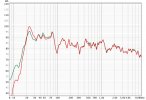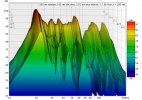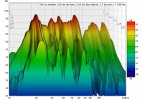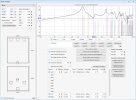A couple thoughts on sealed vs ported…
This experience is derived from my ownership of the SVS PB13U and later the Funk 18.0 (and later addition of the 21.0LX).
In my room, I measured that when set to sealed mode, the PB13 essentially achieved a flat response down to the (admittedly limited) limits of my Omnimic. This result caused me to pursue sealed subs for further applications.
I decided to purchase a Funk 18.0 subwoofer, with the expectation that I might loose a little something in the low end, but should net me a little more infrasonic output. After calibration, I felt that the Funk sub was markedly superior to the PB13.
My explanation for this is fairly straightforward. Content is typically dominated, not by material at 20Hz, but by material in the 40-80Hz spectrum. Here, the Funk has a significant advantage thanks to a more efficient driver and more power from the amplifier. Where this content might cause the PB13’s amp to run out of steam, the Funk is happily cruising along. I believe Mr. Seaton of Seaton Sound observed the same effect in talks I’ve had with him, which explains why he designed the Submersive exactly the way he did, and consequently why it was so highly regarded.








